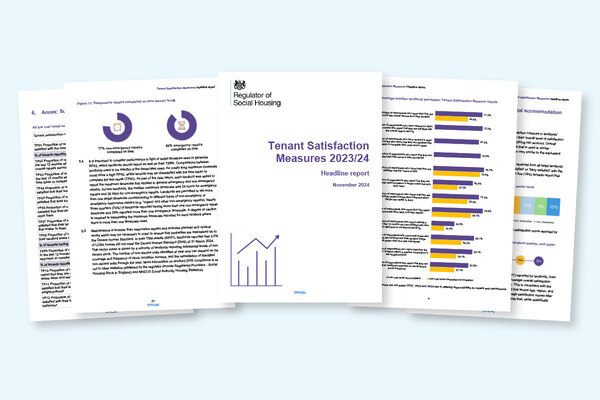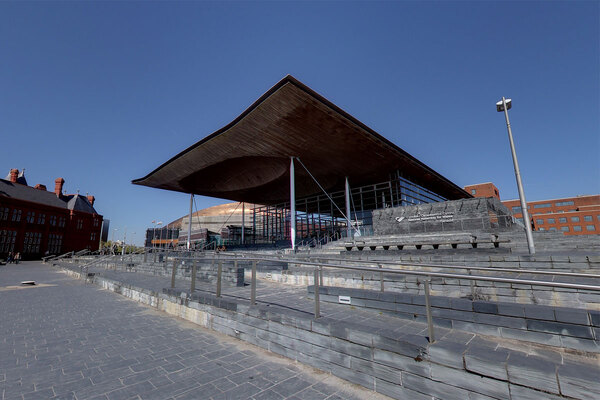You are viewing 1 of your 1 free articles
How should social landlords be using their tenant satisfaction measures results?
Our analysis and benchmarking of the TSMs is crucial in our understanding of the sector, writes Kate Dodsworth, chief of regulatory engagement at the Regulator of Social Housing
2024 has been a pivotal year for the social housing sector. As the regulator in England, we have introduced significant changes as a result of our stronger consumer regulation remit, from our new consumer standards, to our inspection programme and new information requirements for landlords.
What this all comes back to is the need for landlords to provide good-quality homes and services for tenants – with a range of data to back that up.
This week we published the findings of our National Tenant Survey – an independent benchmark of landlords’ tenant satisfaction measures (TSMs). Alongside this, we published our analysis of large landlords’ first TSMs results, along with their data and supporting information.
As a reminder, the TSMs are a set of questions that landlords need to ask tenants about their service, and management information data collected by landlords about the delivery of key services (including health and safety indicators). All landlords need to publish the results, so that tenants and other stakeholders can scrutinise their performance.
The TSMs are a useful tool for tenants to hold their landlord to account. Nearly half a million tenants completed a survey, providing a rich source of insight. For the first time, there is a consistent set of performance metrics that all landlords must publish. This covers important issues such as satisfaction with a landlord’s overall service, approach to repairs and complaint handling, and the way they engage with tenants.
The TSMs will let tenants see how their landlord is performing in these areas over time, with tangible data to compare.
“They should triangulate the TSMs against other sources of information to make sure they are providing safe and decent homes for tenants. Landlords should already be acting on the TSMs for the 2023-24 year”
Landlords must interrogate the results from tenants and their own information, and use the findings to drive improvements. They should triangulate the TSMs against other sources of information to make sure they are providing safe and decent homes for tenants. Landlords should already be acting on the TSMs for the 2023/24 year.
We also use the results as one part of our proactive regulation of the consumer standards. They give us additional context to help build a picture of overall performance. For example, we will look at a landlord’s TSM results before starting an inspection or carrying out responsive engagement. We also look at a range of other data sources, including a landlord’s fire safety remediation returns, health and safety compliance data and stock condition surveys.
What we don’t do is look at the TSMs in isolation. There is a diverse provision of social housing across the country, with landlords of varying sizes and structures. Many factors can lead to different results between landlords, so it is crucial that they are understood in the round. This underpins the way we have published the data, with landlords’ TSMs provided alongside important contextual information.
At a sector-wide level, the TSMs analysis we published this week (from landlords with 1,000 homes or more) shows that over 70% of tenants are satisfied with their landlords’ service, feel their home is safe and well maintained, and their landlord treats them with fairness and respect. We can also see that in a number of cases, landlords are widening their insight from, and engagement with, tenants.
“A key finding is that tenants who are happy with their landlord’s repairs service, and feel their home is well maintained, are more likely to be satisfied with their landlord overall”
But there is room for improvement and the sector shouldn’t be complacent. One in five tenants are still not satisfied with their landlord’s service. Landlords will also need to reflect carefully on why only a third of affected tenants report being satisfied with complaint handling. We are following up with landlords who are outliers where we have concerns about the quality of their data. We have already captured some of the most significant failures in our recent regulatory judgements.
We have also published the results of our National Tenant Survey, which lets us dig deeper into the TSMs and see what is driving the results.
A key finding is that tenants who are happy with their landlord’s repairs service, and feel their home is well maintained, are more likely to be satisfied with their landlord overall. It is this above other factors – such as a tenant’s age, location, landlord type, age of their home – that has the biggest impact on satisfaction.
In other words, tenant satisfaction is largely driven by what I said at the start: landlords providing good-quality homes and services for tenants.
As we look ahead to the next year, we will continue to roll out our proactive consumer regulation programme with more inspections, responsive investigations and judgements. The publication of our National Tenant Survey and TSMs analysis is an important milestone for the sector, and all landlords should read and learn from the findings as part of their wider work to improve tenants’ homes and services.
Kate Dodsworth, chief of regulatory engagement, Regulator of Social Housing
Sign up for our regulation and legal newsletter
Already have an account? Click here to manage your newsletters











